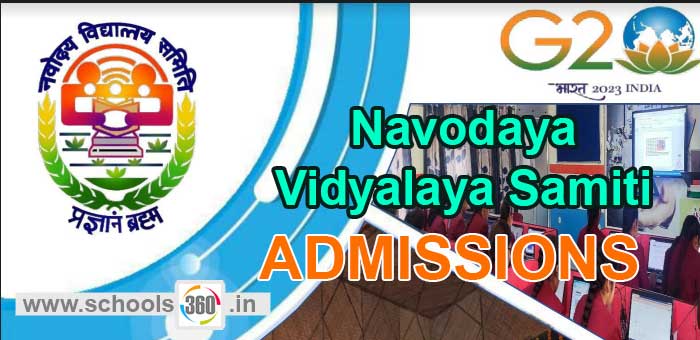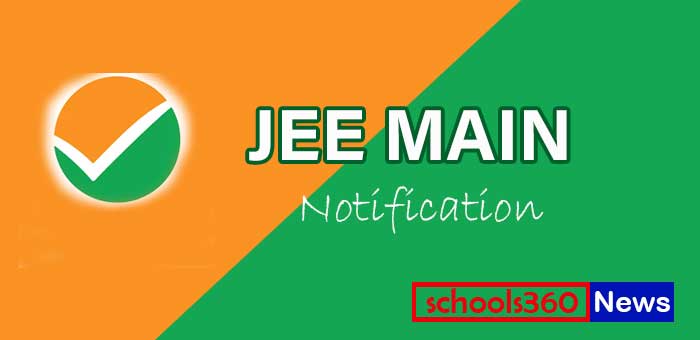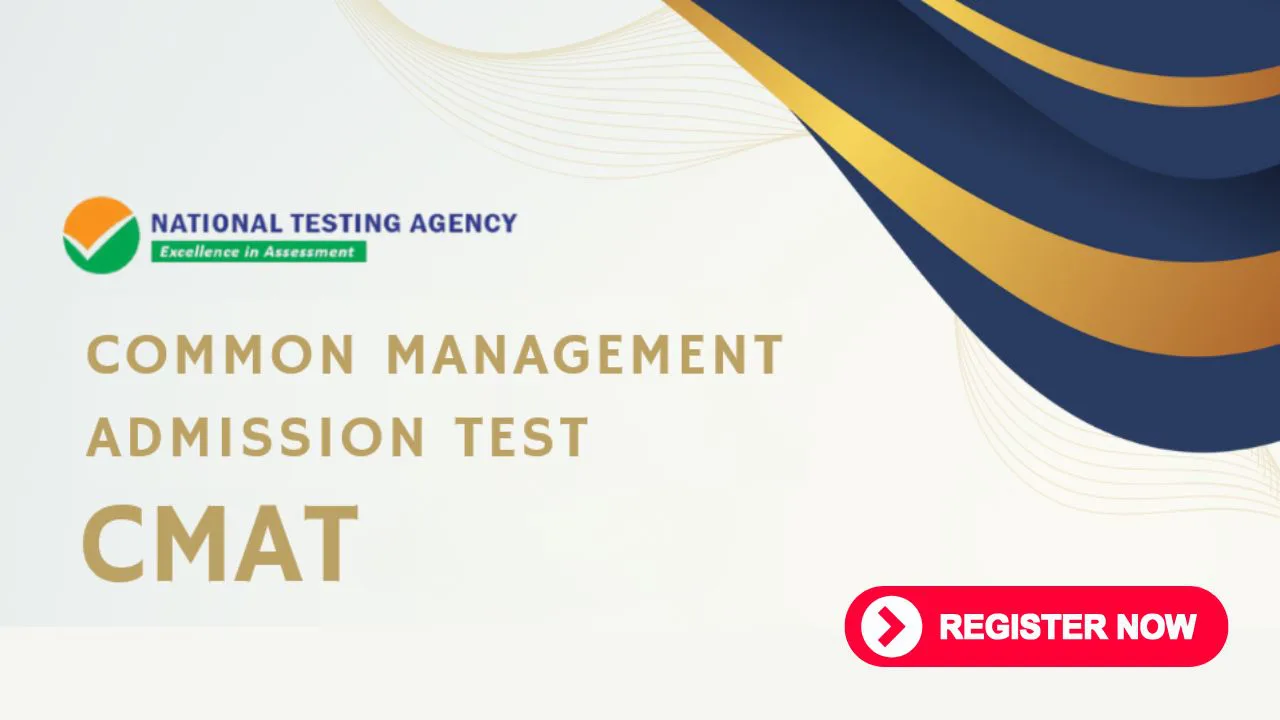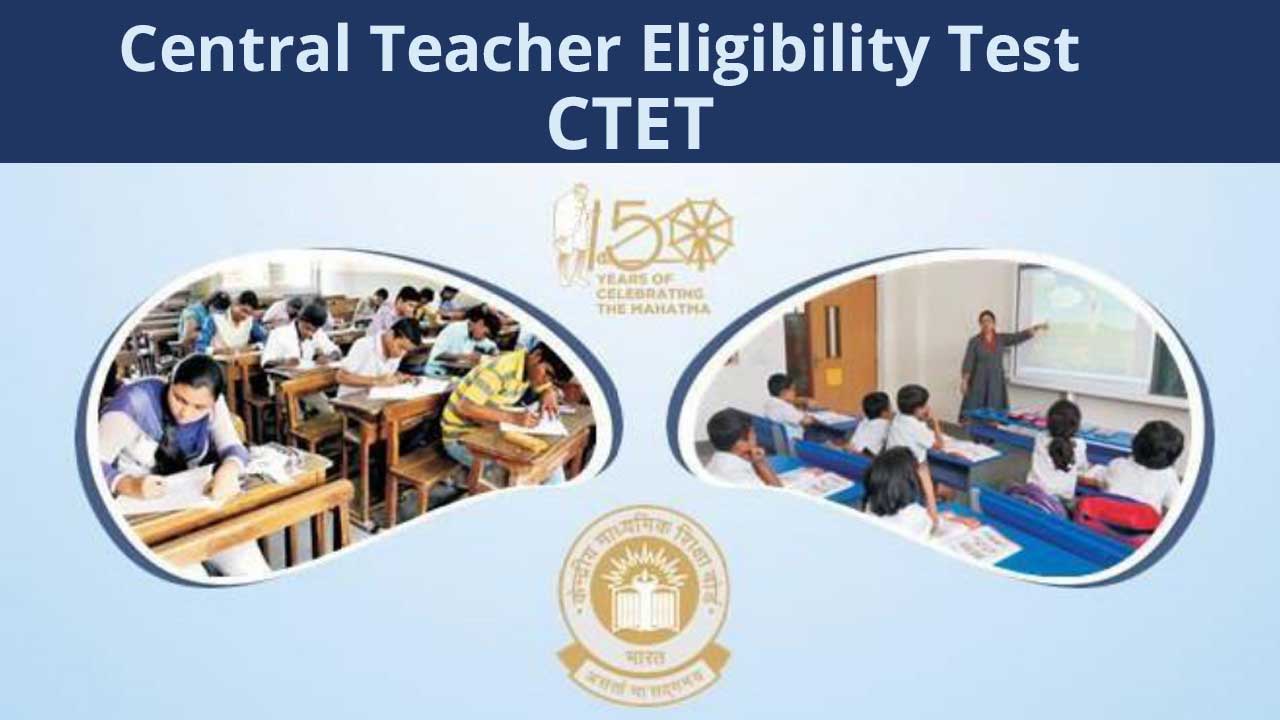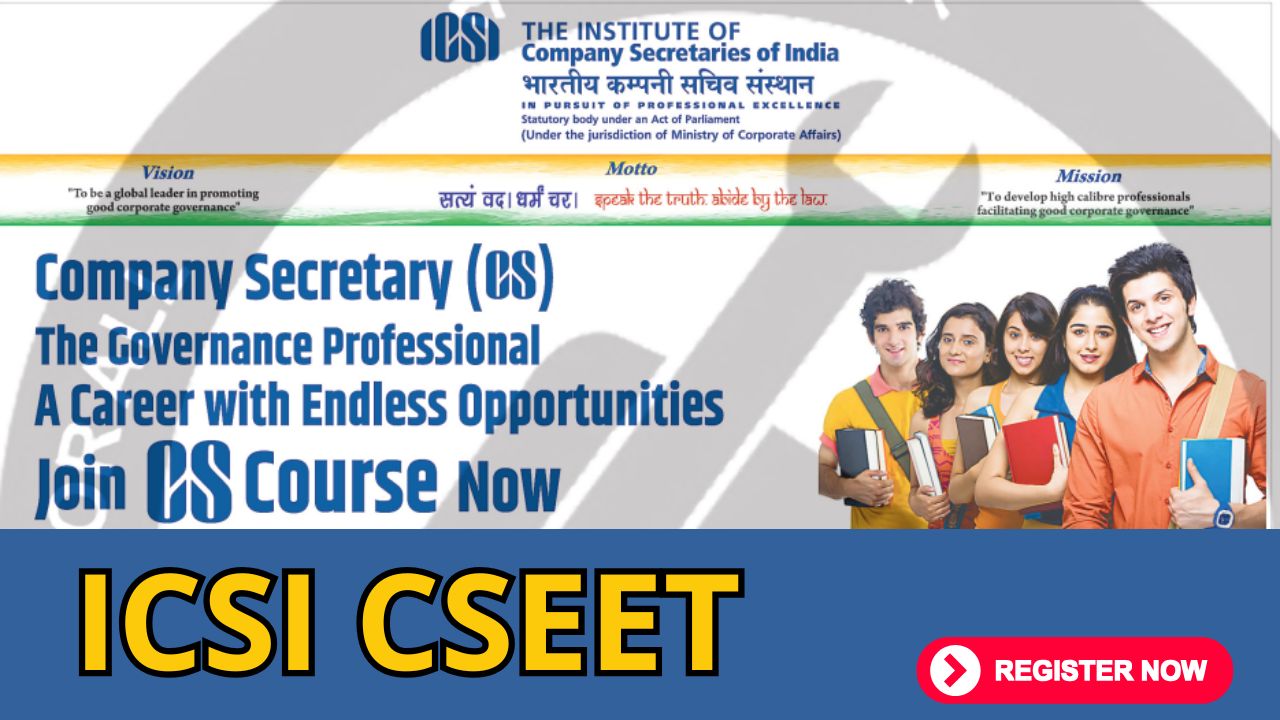Navodaya Vidyalaya Samiti is inviting Online Applications for Vacant Seats in Class 11 admissions in JNVs are made through the Jawahar Navodaya Vidyalaya Selection Test (JNVST) for the Academic year 2026-27.
According to the Navodaya Vidyalaya Scheme, one Jawahar Navodaya Vidyalaya is to be set up in each District in a phased manner. At present, 653 Vidyalayas are functional in 27 States and 08 Union Territories except the state of Tamil Nadu.
JNVST Admission Form 2026-27: JNV Class 11 lateral entry registration
Online applications are invited from eligible students for admission to Class XI, only against the vacant seats, likely to be YES in JNVs during the academic year 2026-27. Admission will be made on the basis of selection test, which will be conducted by an external agency as per the policy of NVS.
Important Dates
| Event | Date |
| NVST Class 11 Admission Notification Date | July 30, 2025 |
| NVST Class 11 Admission Application Dates | Till October 21, 2025 |
| NVST Class 11 Admission Test Date | February 7, 2026 |
Eligibility Criteria
Date of Birth of the candidate is to be between 1st June 2009 to 31st July 2011 (both days inclusive). This is applicable to all categories of candidates, including those who belong to the Scheduled Castes and Scheduled Tribes. Candidates who have passed class X prior to the session 2025-26 are not eligible. Candidates who are studying in class X during the session 2025-26 only are eligible to apply.
The candidate must be studying in Class X from a Govt./ Govt. recognized school (affiliated to CBSE or any other State Education Board/ other Govt. recognized Board) of the District where the Jawahar Navodaya Vidyalaya is located during the academic session 2025-26 (April 2025 to March 2026 session) / 2025 (January to December 2025 session).
Only Indian Nationals, who are studying Class-X in India are eligible to apply.
Candidates who have passed class X prior to the session 2025-26 are not eligible. Candidates who are studying in class X during the session 2025-26 only are eligible to apply.
Selection Criteria
The selection of students for admission will be based on the vacant seats likely to be available in JNVs in Class-XI for the academic session 2026-27.
Streams and selection criteria in Exam
The candidate has to score minimum qualifying marks, i.e., 06 marks out of 20, as per NVS criteria for all the 05 subjects. However, the merit list will be prepared on the basis of marks obtained in different subjects as per the following criteria (Out of 60):
| S. No. | Stream | Subjects considered for preparing merit list | Maximum marks |
| 1 | Science (Physics & Chemistry compulsory) | Mental Ability + Science + Mathematics | 60 |
| 2 | Commerce (Accountancy, Business & Economics compulsory) | Mental Ability + Social Science + Mathematics | 60 |
| 3 | Humanities (History, Geography & Economics compulsory) | Mental Ability + Social Science + One subject out of the remaining three subjects with highest marks | 60 |
| 4 | Vocational (Vocational subjects compulsory) | Mental Ability + two more subjects out of the remaining four subjects with highest marks | 60 |
Important Dates
Lateral Entry Selection Test for admission to Class-XI in JNVs against the vacant seats, likely to be available in JNVs for the academic session 2026-27, will be held on 07 February 2026.
The last date to submit an online application is September 23, 2025. The correction window will be opened for two days after the last date of submission of the application forms. The candidates are advised to fill out the credentials with due care and use the facility of the correction window. Afterward, no request for correction in particulars will be entertained at any stage.
How to Apply
The candidate can fill the online application form directly on NVS website www.navodaya.gov.in
Important Links
| NVST Class 11 Admission Prospectus cum Information Brochure | Click Here |
| NVST Class 11 Admission Online Application Form | Click Here |
| NVST Official Website | Click Here |
Exam Pattern
Bilingual (English and Hindi) question paper will be provided to the candidates.
A separate OMR (Optical Mark Recognition) answer sheet will be provided. Candidates are required to indicate their answers at an appropriate place on the OMR sheet.
The selection test will be two and a half hours long from 11:00 A.M. to 1:30 P.M. and will have five sections with only objective-type questions. There are 100 questions in all for 100 marks.
| Subject | Number of Questions | Marks | Approximate Time |
| Mental Ability | 20 | 20 | 30 Minutes |
| English | 20 | 20 | 30 Minutes |
| Science | 20 | 20 | 30 Minutes |
| Social Science | 20 | 20 | 30 Minutes |
| Mathematics | 20 | 20 | 30 Minutes |
| Total | 100 | 100 | 2 hr. 30 min |
Each candidate will be given a single test booklet comprising all five sections. As per government norms, “Divyang students” will be allowed an additional 50 minutes.
| Subject | Syllabus | |
| Mental Ability | Total no of Question (MCQ types with 4 options): 20 Weightage of each Question: 01 marks Total marks allotted in Mental Ability: 20 marks | Pattern Completion Figure Series Completion Geometrical Figure Completion (Triangle, Square, Circle) Mirror Imaging Punched Hold Pattern (Folding/Unfolding) Calendar, Time and Clock Embedded Figure Coding-Decoding Orientation / Direction Space visualization |
| English | Total no of Questions (MCQ types with 4 options): 20 Weightage of each Question: 01 mark Total marks allotted in English: 20 marks | Reading Skills (10 marks) Reading Comprehension through Unseen Passage. Discursive passage. (Including vocabulary) Case-based passage (with visual input- statistical data, chart etc.). Section-B Grammar (10 marks) Tenses Modals Subject – verb concord Reported speech Commands and requests Statements Questions Determiners Spelling Syntax |
| Science | Total no of Questions (MCQ types with 4 options): 20 Weightage of each Question: 01 mark Total marks allotted in Science: 20 marks | Theme: Materials Unit I: Chemical Substances – Nature and Behaviour Chemical reactions: Chemical equation, Balanced Chemical Equation, implications of a balanced chemical equation, types of chemical reactions: combination, decomposition, displacement, double displacement, precipitation, endothermic exothermic reactions, oxidation and reduction. Acids, bases and salts: Their definitions in terms of furnishing of H+ and OH– ions. General properties, examples and uses, neutralization, concept of pH scale (Definition relating to logarithm not required), importance of pH in everyday life; preparation and uses of Sodium Hydroxide, Bleaching powder, Baking soda, Washing soda and Plaster of Paris. Metals and Non-metals: Properties of metals and non-metals; Reactivity series; Formation and properties of ionic compounds; Basic metallurgical processes; Corrosion and its prevention. Carbon compounds: Covalent bonding in carbon compounds. Versatile nature of carbon. Homologous series. Nomenclature of carbon compounds containing functional groups (halogens, alcohol, ketones, aldehydes, alkanes and alkynes), difference between saturated hydro carbons and unsaturated hydrocarbons. Chemical properties of carbon compounds (combustion, oxidation, addition and substitution reaction). Ethanol and Ethanoic acid (only properties and uses), soaps and detergents. Theme: The World of the Living Unit II: The World of Living Life processes: ‘Living Being’. Basic concept of nutrition, respiration, transport and excretion in plants and animals. Control and co-ordination in animals and plants: Tropic movements in plants; Introduction of plant hormones; Control and co-ordination in animals: Nervous system; Voluntary, involuntary and reflex action; Chemical co-ordination: animal hormones. Reproduction: Reproduction in animals and plants (asexual and sexual) reproductive health – need and methods of family planning. Safe sex V HIV/AIDS. Child bearing and women’s health. Heredity and Evolution: Heredity; Mendel’s contribution- Laws for inheritance of traits: Sex determination: brief introduction: (topics excluded – evolution; evolution and classification and evolution should not be equated with progress). Theme: Natural Phenomena Unit III: Natural Phenomena Light: Reflection of light by curved surfaces; Images formed by spherical mirrors, centre of curvature, principal axis, principal focus, focal length, mirror formula (Derivation not required), magnification. Refraction; Laws of refraction, refractive index. Refraction of light by spherical lens; Image formed by spherical lenses; Lens formula (Derivation not required); Magnification. Power of a lens. Functioning of a lens in human eye, defects of vision and their corrections, applications of spherical mirrors and lenses. Refraction of light through a prism, dispersion of light, scattering of light, applications in daily life (excluding colour of the sun at sunrise and sunset). Theme : How Things Work Unit IV: Effects of Current Electric current, potential difference and electric current. Ohm’s law; Resistance, Resistivity, Factors on which the resistance of a conductor depends. Series combination of resistors, parallel combination of resistors and its applications in daily life. Heating effect of electric current and its applications in daily life. Electric power, Interrelation between P, V, I and R. Magnetic effects of current: Magnetic field, field lines, field due to a current carrying conductor, field due to current carrying coil or solenoid; Force on current carrying conductor, Fleming’s Left Hand Rule, Direct current. Alternating current: frequency of AC. Advantage of AC over DC. Domestic electric circuits. Theme : Natural Resources Unit V: Natural Resources Our Environment: Eco-system, Environmental problems, Ozone depletion, waste production and their solutions. Biodegradable and non-biodegradable substances. |
| Social Science | Total no of questions (MCQ types with 4 options): 20 Weightage of each Question: 01 mark Total marks allotted in Social Science: 20 marks | Unit 1: India and the Contemporary World – II Section 1: Events and Processes: The Rise of Nationalism in Europe: The French Revolution and the Idea of the Nation The Making of Nationalism in Europe The Age of Revolutions: 1830-1848 The Making of Germany and Italy Visualizing the Nation Nationalism and Imperialism Nationalism in India: The First World War, Khilafat and Non -Cooperation Differing Strands within the Movement Towards Civil Disobedience The Sense of Collective Belonging Section 2: Livelihoods, Economies and Societies: The Making of a Global World: The Pre-modern world The Nineteenth Century (1815-1914) The Inter war Economy Rebuilding a World Economy: The Post-War era The Age of Industrialization: Before the Industrial Revolution Hand Labour and Steam Power Industrialization in the Colonies Factories Come Up The Peculiarities of Industrial Growth Market for Goods Section 3: Everyday Life, Culture and Politics: Print Culture and the Modern World: The First Printed Books Print Comes to Europe The Print Revolution and its Impact The Reading Mania The Nineteenth Century India and the World of Print Religious Reform and Public Debates New Forms of Publication Print and Censorship Unit 2: Contemporary India – II Resources and Development: Concept Development of Resources Resource Planning – Resource Planning in India, Conservation of Resources Land Resources Land Utilization Land Use Pattern in India Land Degradation and Conservation Measures Soil as a Resource – Classification of Soils, Soil Erosion and Soil Conservation (excluding Box Information on State of India’s Environment) Forest and Wildlife Conservation of forest and wildlife in India Types and distribution of forests and wildlife resources Community and Conservation Water Resources: Water Scarcity and The Need for Water Conservation and Management Multi-Purpose River Projects and Integrated Water Resources Management Rainwater Harvesting Agriculture: Types of Farming – Primitive Subsistence, Intensive Subsistence, Commercial Cropping Pattern – Major Crops, Food Crops other than Grains, Non-Food Crops, Technological and Institutional Reforms Food Security (excluding impact of globalization on agriculture) Minerals and Energy Resources What is a mineral? Mode of occurrence of Minerals – Where are these minerals found? Ferrous Minerals, Non-Ferrous Minerals, Non- Metallic Minerals, Rock Minerals Conservation of Minerals Energy Resources – Conventional Sources of Energy, Non-Conventional Sources of Energy Conservation of Energy Resources Manufacturing Industries: Importance of Manufacturing – Industrial Location (excluding Industry Market Linkage), Agro based Industry (excluding Cotton Textiles, Jute Textiles, Sugar Industry), Mineral based Industries(excluding Iron Steel Industry, Cement Industry), Industrial Pollution and Environmental Degradation, Control of Environmental Degradation Life Lines of National Economy: Roadways Railways Pipelines Waterways Major Seaports Airways Communication International Trade Tourism as a Trade Unit 3: Democratic Politics – II Power Sharing: Belgium and Sri Lanka Majoritarianism in Sri Lanka Accommodation in Belgium Why power sharing is desirable? Forms of Power Sharing Federalism: What is Federalism? What make India a Federal Country? How is Federalism practiced? Decentralization in India Gender, Religion and Caste: Gender and Politics – Public/Private division, Women’s political representation Religion, Communalism and Politics – Communalism, Secular State (excluding image on page 46, 48, 49 of NCERT Textbook – Democratic Politics –II – reprinted edition 2021) Caste and Politics – Caste inequalities, Caste in politics, Politics in caste Political Parties: Why do we need Political Parties? – Meaning, Functions, Necessity How many parties should we have? National Parties State Parties Challenges to Political Parties How can Parties be reformed? Outcomes of Democracy: How do we assess democracy’s outcomes? Accountable, responsive and legitimate government Economic growth and development Reduction of inequality and poverty Accommodation of social diversity Dignity and freedom of the citizens Unit 4: Understanding Economic Development Development: What Development Promises – Different People, Different Goals Income and Other Goals National Development How to compare different countries or States? Income and other criteria Public Facilities Sustainability of Development Sectors of the Indian Economy: Sectors of Economic Activities Comparing the three sectors Primary, Secondary and Tertiary Sectors in India Division of sectors as organized and un-organized Sectors in terms of ownership: Public and Private Sectors Money and Credit: Money as a medium of exchange Modern forms of Money Loan activities of Banks Two different Credit situations Terms of Credit Formal Sector Credit in India Self Help Groups for the Poor Globalization and the Indian Economy: Production across countries Interlinking production across countries Foreign Trade and integration of markets What is Globalization? Factors that have enabled Globalization World Trade Organization Impact of Globalization in India The Struggle for a fair Globalization |
| Mathematics | Total no of Questions (MCQ types with 4 options): 20 Weightage of each Question: 01 mark Total marks allotted in Mathematics: 20 marks | UNIT I: NUMBER SYSTEMS 1. REAL NUMBER: Fundamental Theorem of Arithmetic – statements after reviewing work done earlier and after illustrating and motivating through examples, Proofs of irrationality of √2, √3, √5 UNIT II: ALGEBRA POLYNOMIALS Zeros of a polynomial. Relationship between zeros and coefficients of quadratic polynomials. PAIR OF LINEAR EQUATIONS IN TWO VARIABLES: Pair of linear equations in two variables and graphical method of their solution, consistency / inconsistency. Algebraic conditions for number of solutions. Solution of a pair of linear equations in two variables algebraically – by substitution, by elimination. Simple situational problems. QUADRATIC EQUATIONS: Standard form of a quadratic equation ax2 + bx + c = 0, (a ≠ 0). Solutions of quadratic equations (only real roots) by factorization and by using quadratic formula. Relationship between 16 discriminant and nature of roots. Situational problems based on quadratic equations related to day-today activities to be incorporated. ARITHMETIC PROGRESSIONS: Motivation for studying Arithmetic Progression Derivation of the nth term and sum of the first n terms of A.P. and their application in solving daily life problems. UNIT III: COORDINATE GEOMETRY Coordinate Geometry: Review: Concepts of coordinate geometry, graphs of linear equations. Distance formula. Section formula (internal division). UNIT IV: GEOMETRY TRIANGLES: Definitions, examples, counter examples of similar triangles. (Prove) If a line is drawn parallel to one side of a triangle to intersect the other two sides in distinct points, the other two sides are divided in the same ratio. (Motivate) If a line divides two sides of a triangle in the same ratio, the line is parallel to the third side. (Motivate) If in two triangles, the corresponding angles are equal, their corresponding sides are proportional and the triangles are similar. (Motivate) If the corresponding sides of two triangles are proportional, their corresponding angles are equal and the two triangles are similar. (Motivate) If one angle of a triangle is equal to one angle of another triangle and the sides including these angles are proportional, the two triangles are similar. CIRCLES: (Prove) Tangent to a circle at, point of contact. (Prove) The tangent at any point of a circle is perpendicular to the radius through the point of contact. The lengths of tangents drawn from an external point to a circle are equal. UNIT V: TRIGONOMETRY INTRODUCTION TO TRIGONOMETRY: Trigonometric ratios of an acute angle of a right-angled triangle. Proof of their existence (well defined); 17 motivate the ratios whichever are defined at 0o and 90o. Values of the trigonometric ratios of 300, 450 and 600. Relationships between the ratios. TRIGONOMETRIC IDENTITIES: Proof and applications of the identity Sin2A + Cos2A = 1. (Only simple identities to be given). HEIGHTS AND DISTANCES: Angle of elevation, Angle of Depression. : Simple problems on heights and distances. Problems should not involve more than two right triangles. Angles of elevation / depression should be only 30°, 45°, and 60°. UNIT VI: MENSURATION AREAS RELATED TO CIRCLES: Area of sectors and segments of a circle. Problems based on areas and perimeter / circumference of the above said plane figures. (In calculating area of segment of a circle, problems should be restricted to central angle of 60°, 90° and 120° only). SURFACE AREAS AND VOLUMES: Surface areas and volumes of combinations of any two of the following: cubes, cuboids, spheres, hemispheres and right circular cylinders/cones. UNIT VII: STATISTICS AND PROBABILITY STATISTICS: Mean, Median and Mode of grouped data (bimodal situation to be avoided). PROBABILITY: Classical definition of probability. Simple problems on finding the probability of an event. |
| Total |

